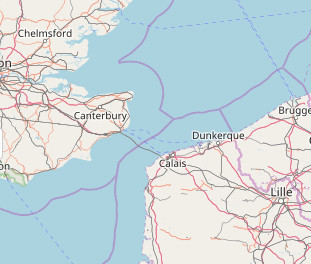
How do the Russians manage to fly their military flights (af FL300) down this part of the Channel?
It’s a bit like this question.
I don’t think they do. All the intercepts I’ve ever read about were further north (and, IIRC, in the Irish Sea)
Their warships go through the Channel. Is there an International right of navigation through some narrow channels? Also Kattegat, Skagerrak, Bosporus, and others I can’t think of in the Far East?
And does this apply to airspace above?
Edited to add: how wide is the north entrance to the Irish Sea?
I read somewhere that russain bombers come straight from the Barents Sea to the Irish sea, then to the Channel, turn back before the “Pas de Calais” and then fly back to the Barents Sea using the same route. All international airspace. Can’t find back the map I saw once.
Maoraigh wrote:
Their warships go through the Channel. Is there an International right of navigation through some narrow channels? Also Kattegat, Skagerrak, Bosporus, and others I can’t think of in the Far East?
And does this apply to airspace above?
For marine traffic, including warships, the Convention of territorial sea and the contiguous zone applies, especially section III is of interest in this case.
For air traffic the regulations must be different since the famous Russian Bears don’t traverse the English Channel. I can’t however find the applicable regulations at the moment.
I assume same way USS gets their navy in Iranian territorial waters? Some sort of right of passage that exists for boats
Territorial waters, in international law, that area of the sea immediately adjacent to the shores of a state and subject to the territorial jurisdiction of that state.
Historically, the concept of territorial waters originated in the controversy over the status of the sea in the formative period of modern international law in the 17th century. Although the doctrine that the sea by its nature must be free to all was eventually upheld, most commentators did recognize that, as a practical matter, a coastal state needed to exercise some jurisdiction in the waters adjacent to its shores. Two different concepts developed—that the area of jurisdiction should be limited to cannon-shot range, and that the area should be a much greater belt of uniform width adjacent to the coast—and in the late 18th century these concepts coalesced in a compromise view that proposed a fixed limit of 3 nautical miles (1 marine league, or 3.45 statute miles [5.5 km]). In 1793 the United States adopted three miles for neutrality purposes, but although many other maritime states during the 19th century came to recognize the same limit, it never won such universal acceptance as to become an undisputed rule of international law.
In the course of this historical development, it became settled that the belt of territorial waters, together with the seabed and subsoil beneath it and the airspace above, is under the sovereignty of the coastal state. This sovereignty is qualified only by a right of innocent passage—that is, peaceful transit not prejudicial to the good order or security of the coastal state—for merchant vessels of other nations. The right of innocent passage does not apply to submerged submarines or to aircraft, nor does it include a right to fish.
On the width of the belt there has developed no universal agreement except that every state is entitled to a minimum of three nautical miles. Claims in excess of 12 nautical miles (22 km) commonly meet widespread opposition from other states, though in the 1960s and ’70s a trend to a 12-nautical-mile limit was evident; among about 40 states taking this view were China, India, Mexico, Pakistan, Egypt, and the Soviet Union.
Another angle I heard somewhere is that a State (I mean its CAA) cannot prosecute something that a pilot did outside the 12 mile limit even though it happened within its airspace boundary.
Not sure how that works exactly. One thing I’ve often wondered is on the jumpseat regulation:
I’ve been often told “You can come, but not in UK airspace” (that by different airlines even). I’ve asked a family friend who’s a lawyer for the Pilot’s Union in his country, who told me the same thing (he was talking about his Jumpseat flight, and claimed he checked and only UK airspace prohibited it).
I haven’t ever looked for the regulations (afterall, I"m not going to argue when I’m already being granted a favour), but seems like this would fall in your case.
Peter wrote:
How do the Russians manage to fly their military flights (af FL300) down this part of the Channel?
Does the UK or/and France have any law concerning military flights (which must be written in their AIPs)?
In other words, is there a reason they cannot do so?